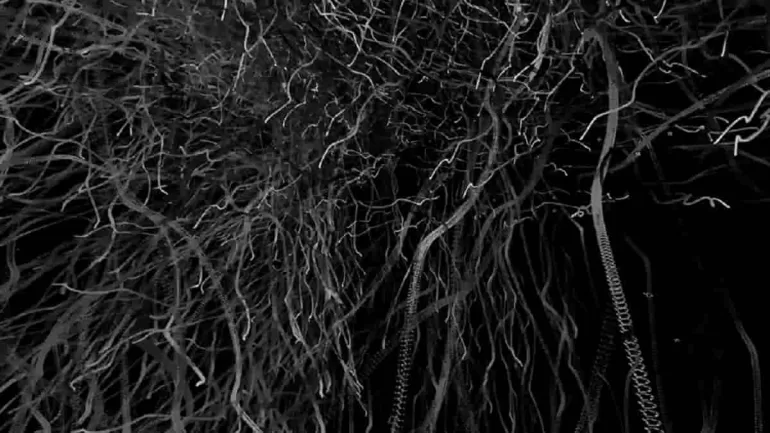ART REVIEW
Code is the new canvas. Discover how artists are using creative coding to shape rhythm, structure, and emotion in a digital world.
BY KAZEEM ADELEKE, ARTCENTRON
GWANGJU— In a world increasingly shaped by algorithms, the Gwangju Media Art Platform (G.MAP) and Art Center Nabi are hosting a groundbreaking exhibition, Code as Canvas: Creative Graphics in the Age of AI. This curated showcase elevates code from a mere technical tool to a powerful artistic medium, a practice known as creative coding. The exhibition challenges traditional notions of art by demonstrating how artists use code to create, explore, and communicate. This collection of works by seven influential artists shows that creative coding is not just about function; it’s a language of imagination, emotion, and aesthetic innovation.
To illustrate the shift from coding to canvas and highlight the evolving landscape of creative coding, the curators organized the art exhibition into thematic sections. Honggyun Mok (G.MAP) and Yeohyun Ahn (Guest Curator) guide viewers through these sections, offering context and insight into this transformative transition in digital art.
Algorithmic Aesthetics and Generative Design
The first section, Form as Code, examines code as a system for artistic composition. This section highlights how code influences rhythm, structure, and typographic design. Artists such as Peter Cho, Bob Faust, Zach Lieberman, and Omid Nemalhabib explore generative typography and algorithmic processes. Their works demonstrate how code can organize visual logic and create rich sensory experiences. This use of creative coding reveals the aesthetic potential within computational systems. The works here show a strong emphasis on digital art and interactive art.
The Poetic Machine: Emotion and Memory in Digital Art
The Poetic Machine section explores how code expresses memory, emotion, and identity. Artists Susan Detroy, Renata Janiszewska, and Karen LaFleur use AI art, generative algorithms, and digital drawing to explore themes of femininity, ecology, and cosmic imagination. Their works are not confined to the gallery space; they extend to immersive platforms like G.MAP’s Black Cube and an outdoor media façade. This curatorial approach highlights the expanding possibilities of creative coding and digital art installations. This section powerfully shows how technology can be used to explore deeply human themes.
Innovative Programming in Creative Coding
Special programming by MIT Media Lab’s Future Sketches enhances the exhibition’s educational and interactive aspects. Visitors get to view video archives of live coding performances and participate in creative coding workshops. These presentations illustrate how typographic systems can become responsive, real-time tools for artistic expression. This programming provides essential context for understanding the performative and interactive dimensions of creative coding in contemporary art. It showcases new media art in a collaborative, educational setting.
A special screening of the documentary Graphic Means: A History of Graphic Design Production, directed by Briar Levit, provides crucial historical context. The film documents the shift from analog to digital design production. This historical perspective is essential for understanding the evolution of art and design, and it frames current code-based art practices within a broader tradition. It shows how the principles of graphic design have evolved with the advent of computational art. The film directly connects the history of design to the future of creative coding.
Creative Coding: A Language of Imagination
Through its diverse installations and artistic voices, Code as Canvas: Creative Graphics in the Age of AI redefines code. It shows that code is more than a technical tool; it is a powerful language of imagination. This exhibition firmly establishes creative coding as a significant movement in contemporary art. It explores how code shapes our perception, thought, and feeling in the digital age. The participants include Peter Cho, Susan Detroy, Bob Faust, and Renata Janiszewska. Others are Karen LaFleur, Zach Lieberman, Omid Nemalhabib, and the Future Sketches team. With their works, they demonstrate the immense potential of computational art and digital expression. This groundbreaking exhibition, a collaborative effort, cements creative coding as a core component of modern art.
- Featured Image: Omid Nemalhabib, Alter Poetry, 2025. Type design, kinetic typography, motion graphics.
Code as Canvas: Creative Graphics in the Age of AI continues through August 31, 2025 at the Gwangju Media Art Platform
